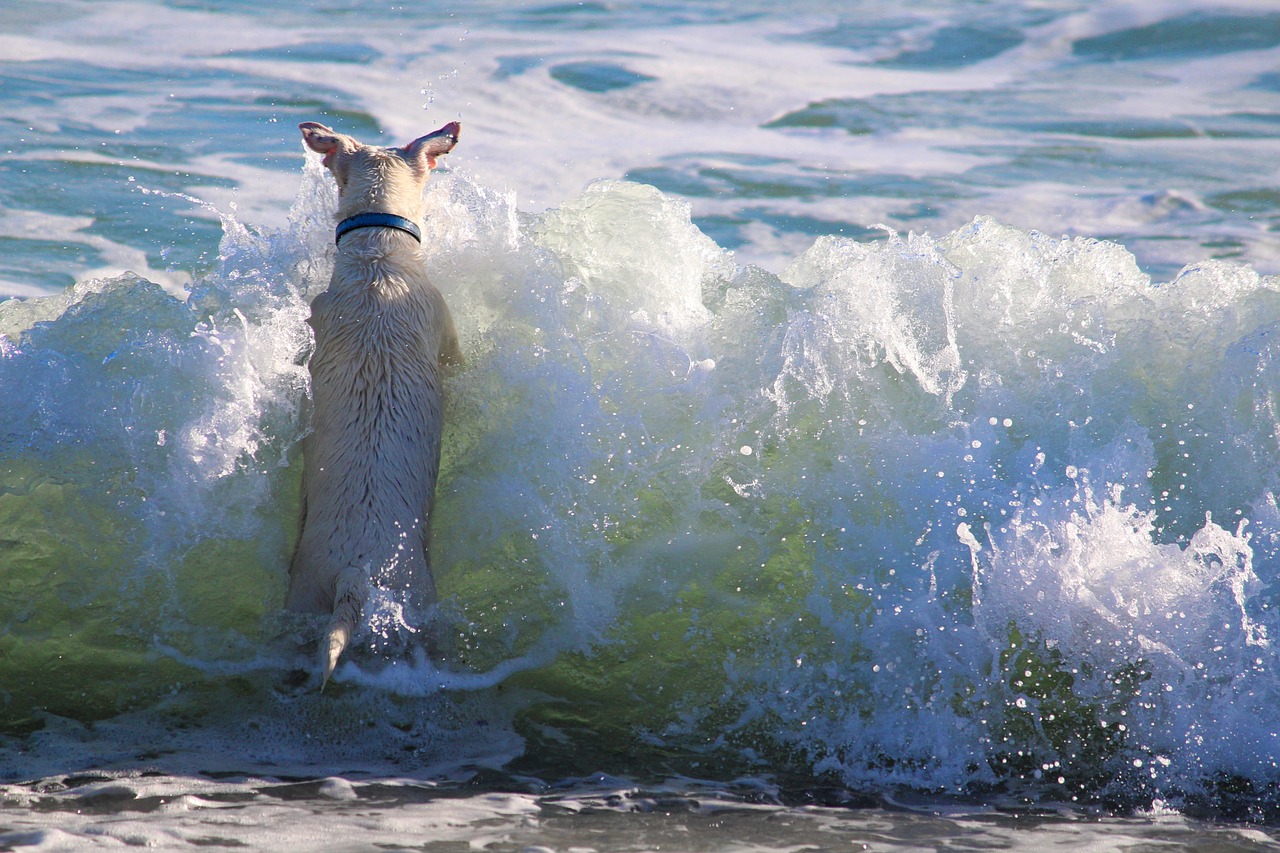Florida is a fantastic place to raise a dog, offering so many ways to enrich their life in nature. Many dogs delight in splashing around and swimming, turning a day at the beach into an unforgettable adventure. However, as a dog owner, you owe it to your dog to keep them safe, and swimming out in the ocean (or any saltwater) isn’t the same as swimming in a backyard pool. Today, let’s discuss how to keep your dog safe and give them the confidence they need to take on the ocean.
The Thrill and Risks of Saltwater for Dogs
Dogs naturally gravitate towards water, finding both joy and a great source of exercise in swimming. Cool water on a hot day offers an excellent way for dogs to stay active while managing their body temperature.
However, saltwater swimming isn’t without its risks. One major concern is dehydration and salt poisoning, as dogs might ingest too much salt water. Common symptoms include vomiting, diarrhea, and severe thirst, especially if they already need water due to excessive exercise. There’s also the risk of dogs swallowing harmful substances or objects found in the water or on the beach.
Additionally, the ocean’s unpredictable currents and waves can pose dangers for inexperienced and experienced swimming dogs alike. Considering the low but constant risk of marine life injuring your dog, it’s important for pet owners to always be aware of these risks and prepare accordingly before heading out on a boat or spending a day at the beach.
Factors Influencing Safety
Not all dogs are natural swimmers. Breeds with short snouts may struggle to breathe while swimming, while those with heavy bodies and short legs can find it hard to stay afloat. Conversely, some breeds, such as labradors and retrievers, excel in water – but that doesn’t mean they should be left to swim without supervision.
No matter the breed, a dog’s age and health can significantly impact its swimming capabilities. Young puppies and senior dogs might find swimming more challenging and exhausting, and younger dogs have less experience in general. Health issues can also limit a dog’s ability to swim safely, so before taking a dog with health concerns into the water, consult your vet to find out how safe the outing will be.
Even if your dog is a strong swimmer, remember that strong currents, high waves, and rip tides can quickly overwhelm an experienced dog. As a dog owner, it is your responsibility to do your research and only swim when weather conditions and the area are safe.
Making Saltwater Swimming Safe and Enjoyable
Getting your dog into the water can open up a whole new world for them. If you are interested, gradually introduce your dog to water, starting in shallow areas where they feel secure. Consider a dog life vest for extra buoyancy and confidence. You can also begin outside the ocean, in a safe, contained area like a backyard pool. Not only will the conditions be better, but your dog will have less stress and outside factors to drag their attention away from their swimming lessons.
Keep a close eye on your dog while they swim, both in the ocean and out. Look out for signs of distress or fatigue, such as excessive panting, difficulty staying afloat, or whining. Not all dogs are fantastic swimmers, and not all will appreciate a swim in the ocean. Never force your dog to swim when they don’t want and put their safety at risk.
Deepening the bond between you and your dog can help them respect your commands and keep them safe while swimming in the Gulf or ocean. Contact Gulf Coast K9 Dog Training if you are interested in professional dog and obedience training. We are deeply committed to your dog’s safety and happiness.





